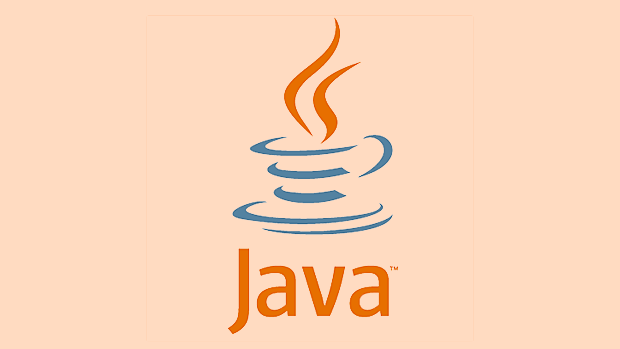Introduction to the Eclipse Vert.x Toolkit for Reactive Java Applications
Jul 28, 2025 am 01:50 AMEclipse Vert.x is a lightweight, high-performance toolkit for building reactive, event-driven Java applications on the JVM. 1. It uses an event loop model to handle concurrency without blocking, ensuring high scalability and low latency. 2. The core unit of deployment is a verticle, which runs in isolation and communicates via the event bus, enabling modular and distributed designs. 3. The event bus supports local and clustered communication using point-to-point, publish-subscribe, and request-response patterns. 4. All APIs are non-blocking, leveraging callbacks or Future/Promise for asynchronous handling of HTTP, databases, and messaging. 5. Vert.x supports polyglot development but offers a mature Java API ideal for microservices, real-time systems, and cloud-native applications. 6. It excels in performance, flexibility, and real-time capabilities, with built-in support for WebSockets, back-pressure, and clustering via Hazelcast or Apache Ignite. 7. A minimal HTTP server example demonstrates how to deploy a verticle that responds to requests without blocking. 8. Use cases include low-latency microservices, IoT, live data feeds, and API gateways, though CPU-intensive tasks should be offloaded to worker verticles. 9. Vert.x complements frameworks like Spring, offering a lean alternative or addition for reactive systems. Therefore, Eclipse Vert.x is a powerful, pragmatic choice for developers seeking scalable, responsive, and resilient Java applications with fine-grained control and minimal overhead.

Reactive applications are becoming the go-to choice for building scalable, responsive, and resilient systems—especially in modern cloud-native environments. One of the standout tools in the Java ecosystem for building such applications is Eclipse Vert.x. It’s lightweight, fast, and designed from the ground up for asynchronous, event-driven development.

What Is Eclipse Vert.x?
Eclipse Vert.x is a toolkit (not a full framework) for building reactive applications on the JVM. Unlike traditional Java web frameworks that rely on blocking I/O and thread-per-request models, Vert.x embraces non-blocking I/O and an event-driven architecture, making it ideal for high-concurrency use cases.
It’s polyglot, meaning you can use it with Java, Kotlin, Groovy, Scala, JavaScript, and more—but its Java API is particularly mature and widely used. Despite being lightweight, it offers a rich set of capabilities: HTTP servers and clients, WebSockets, message brokering, database clients, and distributed event buses.

Core Concepts: How Vert.x Works
Understanding Vert.x starts with grasping its core architectural principles:
-
Event Loop: At its heart, Vert.x uses an event loop model similar to Node.js. Each event loop runs on a single thread and processes events sequentially, avoiding the overhead of thread contention. You write code that responds to events (like HTTP requests or timer triggers) without blocking the thread.

Verticles: The primary unit of deployment in Vert.x is the verticle—a component that can handle events. Verticles run in isolation and communicate via the event bus, making it easy to build modular, loosely coupled systems.
Event Bus: This is the nervous system of a Vert.x application. It allows verticles to communicate with each other using point-to-point, publish-subscribe, or request-response patterns—locally or across a cluster.
Non-blocking APIs: Every operation in Vert.x (from HTTP calls to database access) is designed to be non-blocking. Instead of waiting for a result, you provide a callback or use
Future/Promiseto handle results when they arrive.
Why Use Vert.x for Reactive Java Apps?
Here’s why developers choose Vert.x over traditional frameworks like Spring MVC or even Spring WebFlux:
Performance: Vert.x is extremely fast. Benchmarks consistently show it handling tens of thousands of requests per second with low latency, thanks to its minimal overhead and efficient use of threads.
Flexibility: Since it’s a toolkit, you pick and use only what you need. You’re not locked into a rigid structure or opinionated configuration.
Real-time capabilities: With built-in support for WebSockets and server-sent events, Vert.x excels at real-time applications like chat services, dashboards, or live data feeds.
Back-pressure support: When working with streams (e.g., in reactive pipelines), Vert.x components can propagate back-pressure, preventing fast producers from overwhelming slow consumers.
Cluster support: With tools like Hazelcast or Apache Ignite, Vert.x can form clusters where event buses span multiple nodes, enabling distributed messaging and high availability.
Getting Started Example (Java)
Here’s a minimal Vert.x HTTP server in Java:
import io.vertx.core.AbstractVerticle;
import io.vertx.core.Vertx;
public class MainVerticle extends AbstractVerticle {
@Override
public void start() {
vertx.createHttpServer()
.requestHandler(req -> req.response().end("Hello from Vert.x!"))
.listen(8080);
}
public static void main(String[] args) {
Vertx.vertx().deployVerticle(new MainVerticle());
}
}Add the Vert.x core dependency in Maven:
<dependency> <groupId>io.vertx</groupId> <artifactId>vertx-core</artifactId> <version>4.4.4</version> </dependency>
Run it, hit http://localhost:8080, and you’ll see the response—without a single blocking call.
Use Cases and When to Consider Vert.x
Vert.x shines in scenarios like:
- Microservices requiring low latency and high throughput
- Real-time APIs (e.g., gaming, IoT, live tracking)
- Integration layers or API gateways
- Applications needing lightweight, embeddable runtimes
It’s less suited for CPU-intensive tasks (unless offloaded properly), but with worker verticles, even those can be handled safely.
Basically, if you're building reactive, scalable Java services and want control without the bloat, Eclipse Vert.x is a powerful, pragmatic choice. It doesn’t replace Spring—it complements it. You can even use them together.
The above is the detailed content of Introduction to the Eclipse Vert.x Toolkit for Reactive Java Applications. For more information, please follow other related articles on the PHP Chinese website!

Hot AI Tools

Undress AI Tool
Undress images for free

Undresser.AI Undress
AI-powered app for creating realistic nude photos

AI Clothes Remover
Online AI tool for removing clothes from photos.

Clothoff.io
AI clothes remover

Video Face Swap
Swap faces in any video effortlessly with our completely free AI face swap tool!

Hot Article

Hot Tools

Notepad++7.3.1
Easy-to-use and free code editor

SublimeText3 Chinese version
Chinese version, very easy to use

Zend Studio 13.0.1
Powerful PHP integrated development environment

Dreamweaver CS6
Visual web development tools

SublimeText3 Mac version
God-level code editing software (SublimeText3)

Hot Topics
 What are the implementation methods of reactive programming in PHP7.0?
May 27, 2023 am 08:24 AM
What are the implementation methods of reactive programming in PHP7.0?
May 27, 2023 am 08:24 AM
Computer programming has gone through many changes and evolutions over the past few decades. One of the latest programming paradigms is called reactive programming, which has become more popular in the development of high-quality, high-concurrency web applications. PHP is a popular web programming language that provides a rich set of libraries and frameworks to support reactive programming. In this article, we will introduce the implementation of reactive programming in PHP7.0. What is reactive programming? Before discussing PHP7.0
 A collection of 10 best practices for Vue
Jun 09, 2023 pm 04:05 PM
A collection of 10 best practices for Vue
Jun 09, 2023 pm 04:05 PM
Vue is one of the more popular front-end frameworks currently and is widely used in a large number of projects. However, the use of Vue is not static. How to use Vue to reduce errors and improve development efficiency? This article will introduce 10 best practice principles of Vue to help developers write more concise, secure, and easy-to-maintain code. Creating a Project with VueCLI The best way to create a Vue project is to use VueCLI. VueCLI can help you quickly build a Vue project containing various modules. exist
 Java development: How to use Vert.x for reactive programming
Sep 22, 2023 am 08:18 AM
Java development: How to use Vert.x for reactive programming
Sep 22, 2023 am 08:18 AM
Java development: How to use Vert.x for reactive programming Preface: In modern application development, reactive programming has become an important concept. It provides an efficient and scalable way to handle asynchronous event streams and data streams. Vert.x is an excellent reactive programming framework. It is based on an event-driven architecture and can well handle high concurrency and large-scale data processing requirements. This article will introduce how to use Vert.x for reactive programming, with some specific code examples. Introducing Vert.
 How to do functional reactive programming with PHP
Jun 08, 2023 pm 08:16 PM
How to do functional reactive programming with PHP
Jun 08, 2023 pm 08:16 PM
PHP is a scripting language mainly used in the field of web development. Although PHP has never been considered a functional programming language, PHP7 has built-in support for functional programming, allowing developers to use functional reactive programming to generate more concise, modular, reusable and measurable code. . In this article, we will show you how to use functional reactive programming in PHP. What is functional programming? Functional programming is a programming paradigm whose core idea is to view programming as a series of
 Java development: How to use RxJava for reactive programming
Sep 22, 2023 am 08:49 AM
Java development: How to use RxJava for reactive programming
Sep 22, 2023 am 08:49 AM
Java development: How to use RxJava for reactive programming, specific code examples are required. Introduction: With the increasing needs of modern software development, traditional programming methods can no longer meet the requirements for high concurrency, asynchronous processing, and event-driven characteristics. In order to solve these problems, reactive programming came into being. As a powerful reactive programming library, RxJava provides rich operators and flexible asynchronous processing methods, which greatly improves development efficiency and application scalability. This article will introduce how to use RxJava to
 How to use Flow API for reactive programming in Java 9
Jul 31, 2023 pm 04:36 PM
How to use Flow API for reactive programming in Java 9
Jul 31, 2023 pm 04:36 PM
How to use FlowAPI to implement reactive programming in Java 9 Introduction: As the complexity of modern applications continues to increase, reactive programming has become an increasingly popular programming paradigm. Java 9 introduced FlowAPI, providing developers with a simple and reliable way to implement reactive programming. This article will introduce how to use FlowAPI to implement reactive programming in Java9 and demonstrate its usage through code examples. What is reactive programming: Reactive programming is a
 Reactive Programming in Java with Project Reactor and Spring WebFlux
Jul 29, 2025 am 12:04 AM
Reactive Programming in Java with Project Reactor and Spring WebFlux
Jul 29, 2025 am 12:04 AM
Responsive programming implements high concurrency, low latency non-blocking services in Java through ProjectReactor and SpringWebFlux. 1. ProjectReactor provides two core types: Mono and Flux, supports declarative processing of asynchronous data flows, and converts, filters and other operations through operator chains; 2. SpringWebFlux is built on Reactor, supports two programming models: annotation and functional. It runs on non-blocking servers such as Netty, and can efficiently handle a large number of concurrent connections; 3. Using WebFlux Reactor can improve the concurrency capability and resource utilization in I/O-intensive scenarios, and naturally supports SSE and WebSo.
 Introduction to the Eclipse Vert.x Toolkit for Reactive Java Applications
Jul 28, 2025 am 01:50 AM
Introduction to the Eclipse Vert.x Toolkit for Reactive Java Applications
Jul 28, 2025 am 01:50 AM
EclipseVert.xisalightweight,high-performancetoolkitforbuildingreactive,event-drivenJavaapplicationsontheJVM.1.Itusesaneventloopmodeltohandleconcurrencywithoutblocking,ensuringhighscalabilityandlowlatency.2.Thecoreunitofdeploymentisaverticle,whichruns







